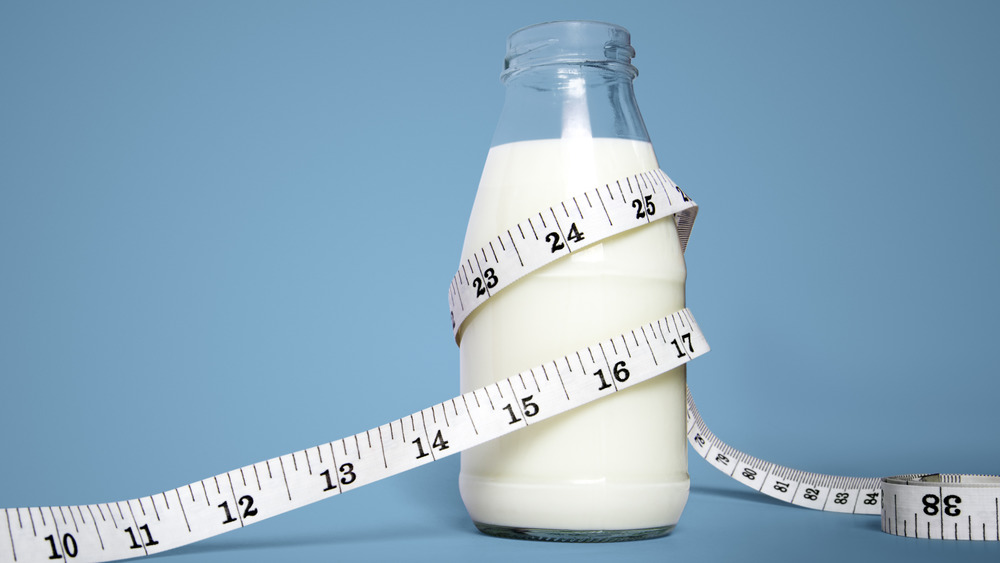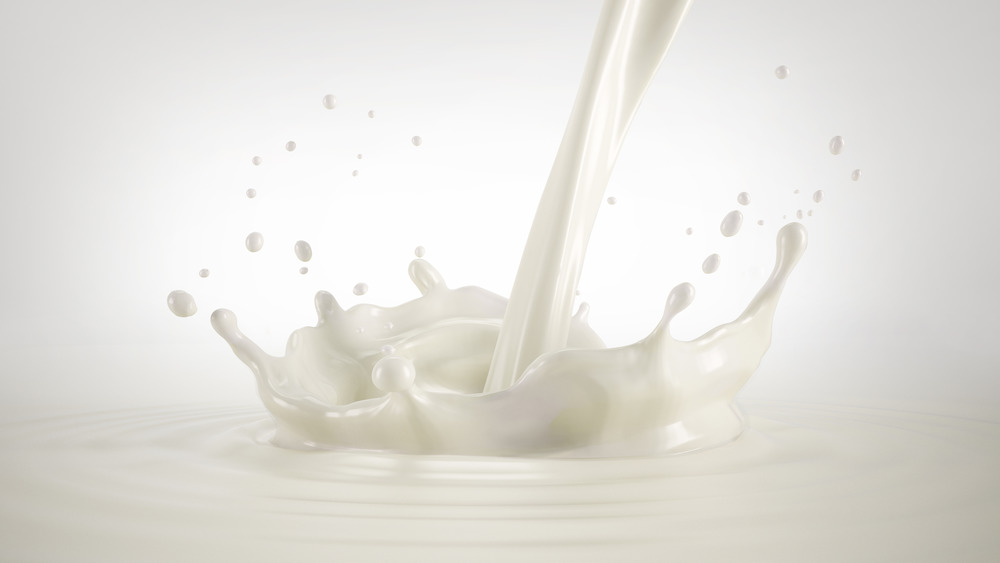Why You Might Want To Think Twice About Drinking Skim Milk
In the heavily shoulder-padded days of the 1980s, commercials matter-of-factly claimed that "milk does a body good" (via Mental Floss). TVs seemed content to tell us that all we needed to do was crack open a jug of udder juice, chug it regularly, and watch as we morphed into a collage of bulging muscles that could make Hulk Hogan's 24-inch pythons look scrawny. Kind of like this ad in which a rail-thin kid shows us that milk will one day make his muscles inflate like beefy blimps. (And then his head turns into a talking balloon that floats away from his torso because milk gives your body nightmares.)
During that age of Hulkamania and Milkamania, many Americans believed their liquid dairy needed to have its fat trimmed – or rather skimmed. Whole milk is 3.25 percent milkfat by weight, per Healthline, and contains roughly 20 percent of your recommended daily intake of saturated fat by 2015 standards. Skim, by contrast, is less than 0.5 percent milkfat. According to the manuscript for a 2016 study published in Food Quality and Preference, thanks to scientific evidence connecting fat consumption to obesity and heart disease, many people switched from whole milk to skim in the '80s.
But as Bob Dylan famously sang, "The times, they are a-changin'." More recent research indicates that if you're looking to pick the healthier milk, knowing that skim has less fat doesn't tell the whole story. Here's the skinny on skim and why you should rethink drinking it.
Skim to none
To be clear, we're not calling skim milk unhealthy. As registered dietician Kelli McGrane observed in an interview with Eat This, Not That!, "The main benefit of skim milk is that it supplies a high amount of protein, calcium, and vitamin D for a relatively low amount of calories." That's dandy. However, a decidedly less dandy observation is that by drinking skim, you skimp on some of milk's best benefits.
Despite what the fat-phobic '80s taught us, some types of fat are, in fact, beneficial (via Healthline). Whole milk contains 183 milligrams of omega-3 fatty acids, which aid the brain and the heart. Skim milk packs just 2.5 milligrams of omega-3s. Plus, because whole milk's fattier, it may strengthen your body's absorption of fat-soluble vitamins such as A, D, and E (via BBC Good Food). While that also means it's higher in the much-maligned saturated fat, conflicting evidence suggests that this might not be as harmful as previously believed.
Moreover, although skim milk touts a lower calorie count than its whole-fat counterpart, it's not as filling or able to stem food cravings. Perhaps that helps explain why a study of 20,000 women found that over a nine-year period, those who regularly consumed whole milk had a 15 percent lower likelihood of gaining weight than those who chose low-fat or no milk at all. But obviously, drinking too much whole milk doesn't do your waistline or the rest of your body good.

